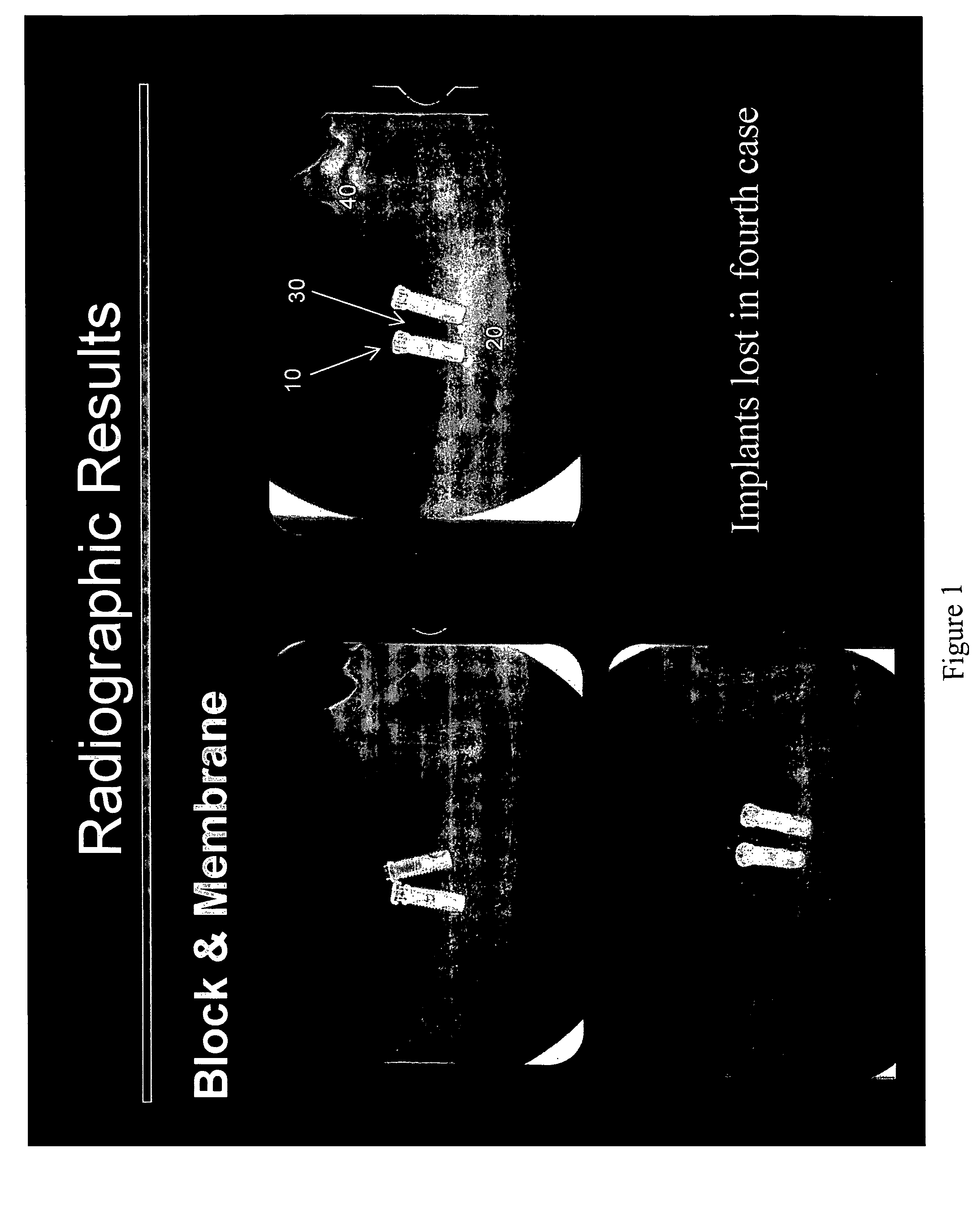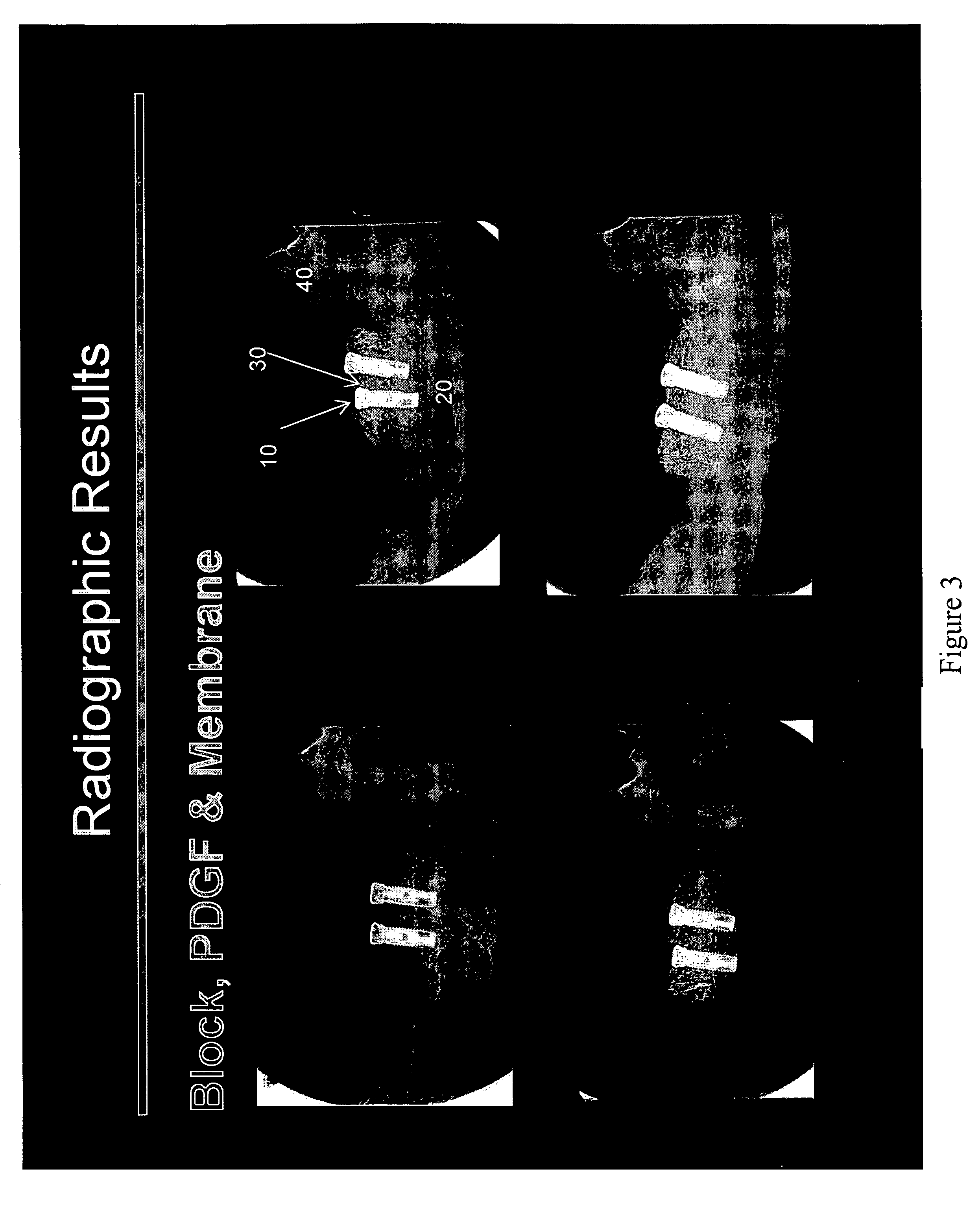Maxillofacial bone augmentation using rhPDGF-BB and a biocompatible matrix
a biocompatible matrix and maxillofacial bone technology, applied in the direction of peptide/protein ingredients, prosthesis, peptide sources, etc., can solve the problems of incomplete bone regeneration, unfavorable implant/crown ratio, excessive long crown, etc., to facilitate bone augmentation, facilitate maxillofacial bone augmentation, the effect of facilitating bone augmentation
- Summary
- Abstract
- Description
- Claims
- Application Information
AI Technical Summary
Benefits of technology
Problems solved by technology
Method used
Image
Examples
example 1
Method of Vertical Ridge Augmentation in Dogs using rhPDGF-BB and a Deproteinized Bovine Bone Block Alone or in Conjunction with a Resorbable Membrane
[0107]The principal aims of this study were: 1) To clinically and radiographically evaluate the potential of utilizing rhPDGF-BB and a deproteinized bovine bone block in conjunction with a resorbable membrane in vertical ridge augmentation; 2) To clinically and histologically evaluate the role of a resorbable membrane in bone regeneration mediated by rhPDGF-BB; 3) To evaluate clinically, radiographically and histologically the safety and efficacy of using rhPDGF and a bone block in the absence of membranes to treat vertical bone defects with regard to biocompatibility, osteoconductivity, osteoinductivity, degradability and substitution; 4) To analyze histologically the healing pattern in the test sites; and, 5) To evaluate the bone to implant contact (BIC) of the regenerated bone on two different implant surfaces.
[0108]This was an open...
example 2
Sinus Elevation to Stimulate Bone Formation in a Maxillary Osseous Defect
[0130]The objective of this study was to evaluate the clinical utility of rhPDGF-BB in combination with β-TCP or other approved bone void filling matrices, for voids or gaps in the maxilla or mandible that are not intrinsic to the stability of the bony structure in accordance with standard clinical practice which included the use of ancillary bone augmentation materials.
[0131]Dosage and Method of Administration: All treatment kits contained 0.25 gm of (β-TCP (250-1000 micron particle size) and 0.5 mL sodium acetate buffer solution containing either 0.3 mg / mL rhPDGF-BB (Group I), or 1.0 mg / mL rhPDGF-BB (Group II). Following proper preparation of the surgical site, to receive the PDGF enhanced matrix, the solution was mixed with the β-TCP or other approved bone void filler(s) in a sterile container, such that the graft material was fully saturated. The hydrated graft was carefully packed into the osseous defect. ...
PUM
| Property | Measurement | Unit |
|---|---|---|
| size | aaaaa | aaaaa |
| size | aaaaa | aaaaa |
| size | aaaaa | aaaaa |
Abstract
Description
Claims
Application Information
 Login to View More
Login to View More - R&D
- Intellectual Property
- Life Sciences
- Materials
- Tech Scout
- Unparalleled Data Quality
- Higher Quality Content
- 60% Fewer Hallucinations
Browse by: Latest US Patents, China's latest patents, Technical Efficacy Thesaurus, Application Domain, Technology Topic, Popular Technical Reports.
© 2025 PatSnap. All rights reserved.Legal|Privacy policy|Modern Slavery Act Transparency Statement|Sitemap|About US| Contact US: help@patsnap.com



